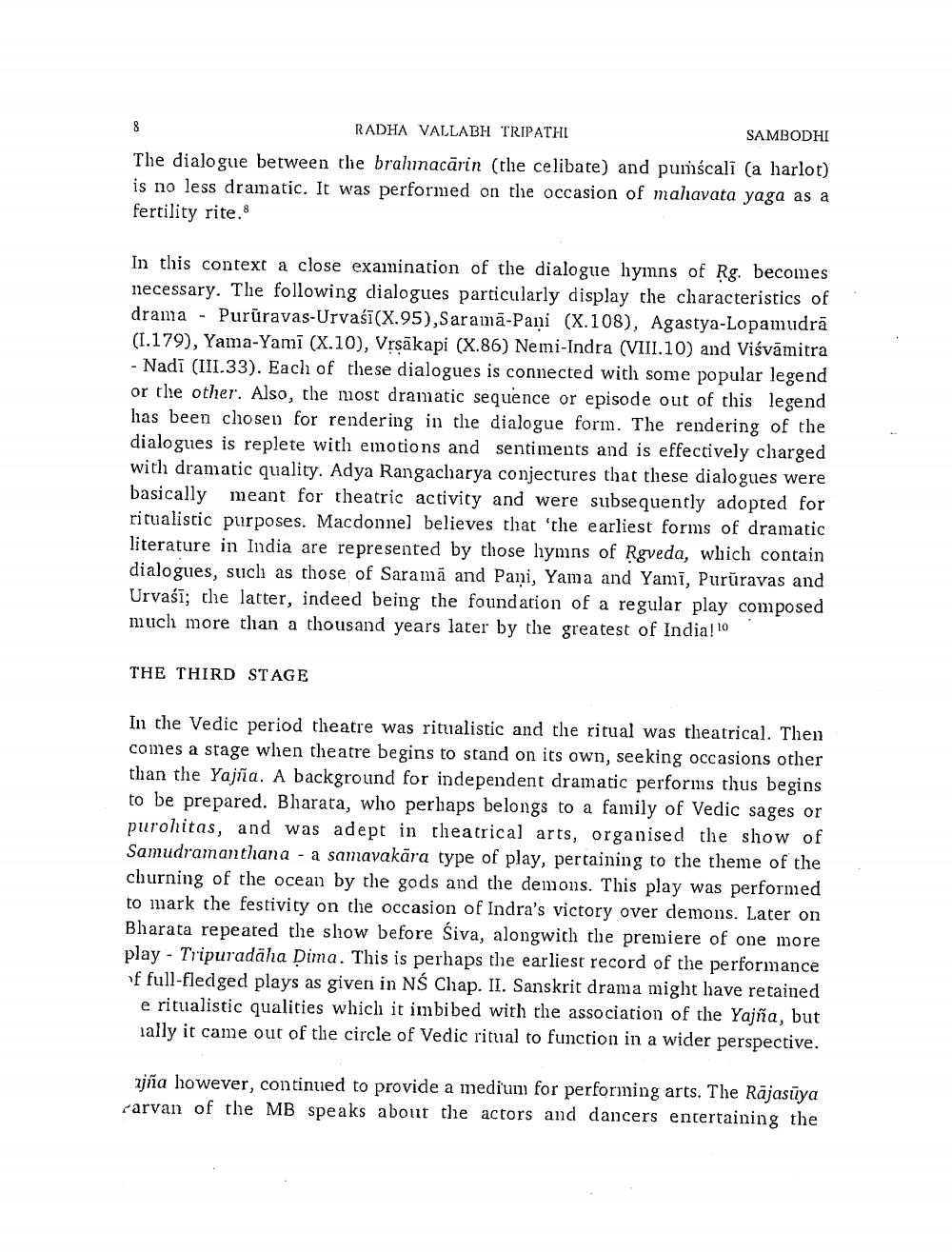________________
RADHA VALLABH TRIPATHL
SAMBODHI The dialogue between the brahmacārin (the celibate) and pumścali (a harlot) is no less dramatic. It was performed on the occasion of mahavata yaga as a fertility rite. 8
In this context a close examination of the dialogue hymns of Rg. becomes necessary. The following dialogues particularly display the characteristics of drama - Purūravas-Urvašī(X.95),Saramā-Pani (X.108), Agastya-Lopamudrā (1.179), Yama-Yami (X.10), Vrsäkapi (X.86) Nemi-Indra (VIII.10) and Viśvāmitra - Nadi (III.33). Each of these dialogues is connected with some popular legend or the other. Also, the most dramatic sequence or episode out of this legend has been chosen for rendering in the dialogue form. The rendering of the dialogues is replete with emotions and sentiments and is effectively charged with dramatic quality. Adya Rangacharya conjectures that these dialogues were basically meant for theatric activity and were subsequently adopted for ritualistic purposes. Macdonnel believes that 'the earliest forms of dramatic literature in India are represented by those hymns of Rgveda, which contain dialogues, such as those of Saramā and Pani, Yama and Yami, Pururavas and Urvasī; the latter, indeed being the foundation of a regular play composed much more than a thousand years later by the greatest of India! 10
THE THIRD STAGE
In the Vedic period theatre was ritualistic and the ritual was theatrical. Then comes a stage when theatre begins to stand on its own, seeking occasions other than the Yajña. A background for independent dramatic performs thus begins to be prepared. Bharata, who perhaps belongs to a family of Vedic sages or purohitas, and was adept in theatrical arts, organised the show of Samudramanthana - a samavakāra type of play, pertaining to the theme of the churning of the ocean by the gods and the demons. This play was performed to mark the festivity on the occasion of Indra's victory over demons. Later on Bharata repeated the show before Siva, alongwith the premiere of one more play - Tripuradala Dima. This is perhaps the earliest record of the performance f full-fledged plays as given in NS Chap. II. Sanskrit drama might have retained e ritualistic qualities which it imbibed with the association of the Yajña, but Tally it came out of the circle of Vedic ritual to function in a wider perspective.
ajña however, continued to provide a medium for performing arts. The Rājasūya carvan of the MB speaks about the actors and dancers entertaining the




